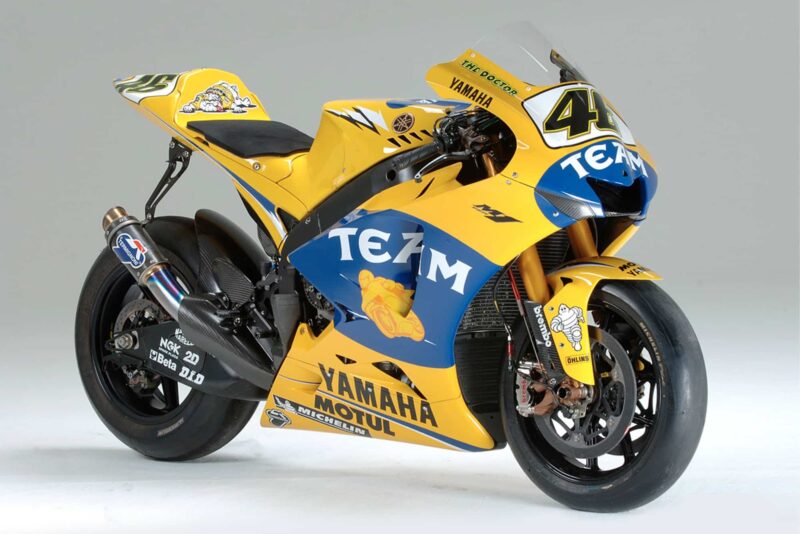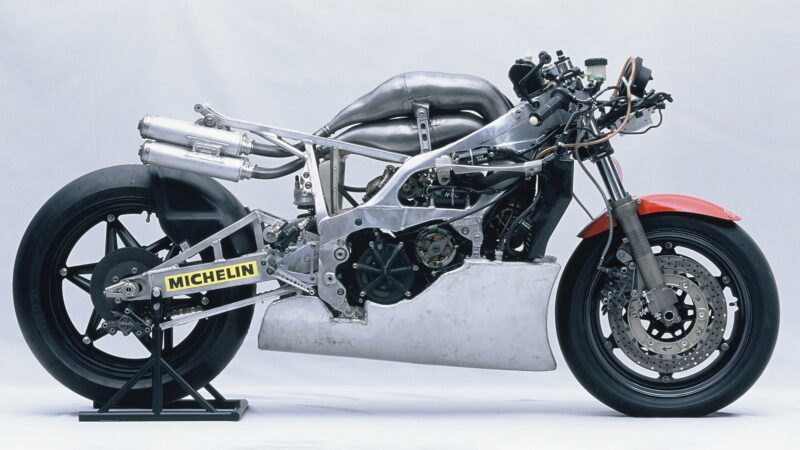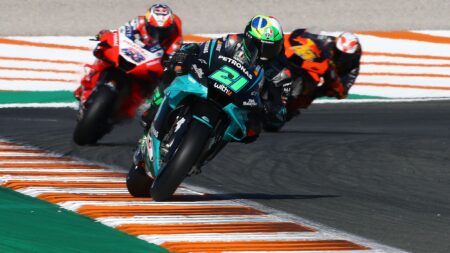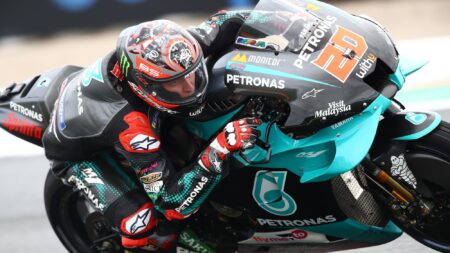The idea was to lower the centre of gravity, which was the way to go fast in car racing. The NSR’s underslung fuel tank only proved that lowering the centre of gravity too far isn’t the way to go fast in bike racing. But this was Honda’s way at the time – using grand prix racing as a radical rolling laboratory. As Soichiro Honda once said, “Success is 99 per cent failure”.
Freddie Spencer and the NSR won the second round of the 1984 500cc world championship but by the time he arrived at the Nürburgring for round five he was lagging far behind Yamaha’s Eddie Lawson.
On Friday evening Spencer, his crew chief Erv Kanemoto and HRC engineers had a meeting and decided to revert to the 1983 NS500 triple. Luckily, HRC had an ex-Marco Lucchinelli NS at its European workshop in Aalst, Belgium, only 160 miles away, so mechanic Stuart Shenton drove to Aalst, loaded the triple into the truck, returned to the track, checked and rebuilt the engine.
It was a long night but by the time Saturday morning practice began, Spencer had three bikes in his garage: two NSR500s and one NS500. The press was agog, swarming around the HRC garage, because this was a big deal.
Spencer took pole position on the triple, ahead of Lawson, and beat his fellow American by 15sec in the race. After that, he sometimes raced the NS and sometimes the NSR, usually depending on circuit layout.
The NSR to NS switch was an easy spot for nosy pit-lane journalists. Others have been less obvious.

Yamaha’s 2006 YZR-M1, the 0WR3, needed a 2005 chassis to go fast
Yamaha
In 1994 reigning world champion Kevin Schwantz reverted to his 1993 Suzuki RGV500 chassis after his crew chief Stuart Shenton (who had switched from HRC to Suzuki where he played a vital part in Schwantz’s title success) noticed that Suzuki had made several mistakes with the 1994 chassis: stiffness, steering head, pivot point and so on. Schwantz won his final victories aboard this new/old RGV.
Yamaha has also been here. The factory went into the 2006 MotoGP season aiming for a title hat-trick with Valentino Rossi. When Rossi joined Yamaha in 2004 the YZR-M1 was the runt of the grid. The bike hadn’t won a single race in 2003 and had scored just one podium finish from 16 races, at rainy Le Mans.
Yamaha sent drivers to collect show bikes, most from foyers of national importer HQs
On a bike revamped by Rossi, crew chief Jeremy Burgess and chief Yamaha Masao Furusawa, Rossi dominated the 2004 and 2005 seasons. For 2006 Yamaha made significant changes to the chassis, which worked well at the factory, but the bike chattered like crazy with Michelin’s new and grippier 2006 rear slick. Sound familiar?
Yamaha did everything they could to increase flex in the 2006 chassis – drilling the frame, cutting the frame and removing the cross brace between the main spars – but nothing worked.
Rossi scored just one victory from the first four races, so something had to be done. On the eve of the French GP Yamaha sent drivers scurrying around Europe to collect 2005 show bikes, most of them parked in the foyers of national importer HQs. At Le Mans, the 2006 engines were fitted to the 2005 frames and Rossi was immediately back up to speed. He ran away with the race – four seconds ahead at two-thirds distance – until the engine broke.
Yamaha never admitted that Rossi was using a 2005 chassis. Instead they called it a new chassis, because it had been slightly modified to take the 2006 engine.




